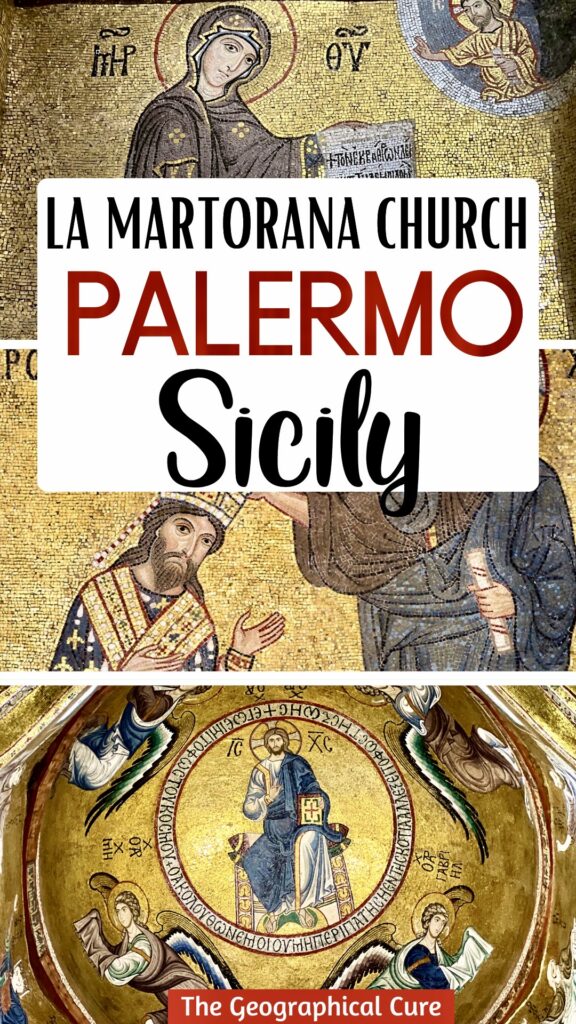La Martorana is a golden treasure that was my favorite church in Palermo. It’s also known by its official name, the Church of Santa Maria dell’Ammiraglio.
Martorana is a small medieval church that combines Arab, Byzantine, and Norman Islamic influences.
You’ll want to visit just to see the continuous cycle of jewel-like mosaics created by Greek artists in the 12th century. The mosaics are even older than the mosaics in the Palatine Chapel.
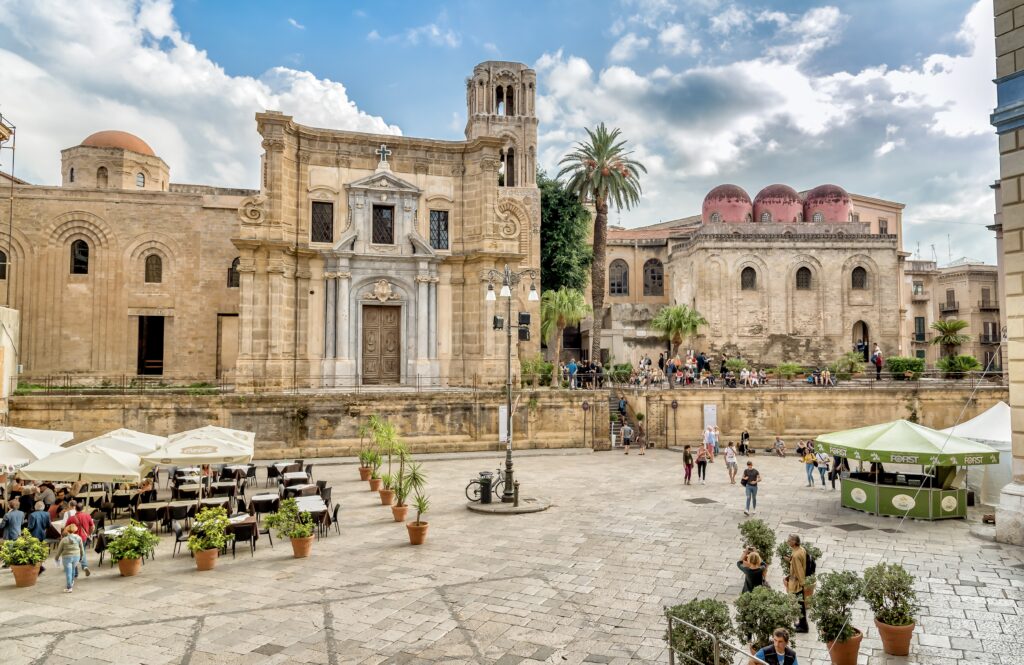
History of La Martorana
No guide to La Martorana would be complete with a bit of history.
La Martorana was built between 1143-51 during the reign of the Norman King Roger II. The commander and admiral of the Sicilian navy, George of Antioch, commissioned the church. He hired Byzantine mosaicists from Constantinople to decorate the walls.
You might think the nickname “Martorana” has something to do with martyrs, but that’s not the case. The name comes Eloise Martorana, the founding abbess of a Benedictine nunnery associated with the church in 1194.
It was these nuns that invented the Sicilian confection of frutta marzipan. It’s a colorful marzipan molded in the shape of a fruit. Marzipan is an integral part of the holiday I Monti, the Dead, akin to our Halloween.
The nuns are long gone, part of the suppression of religious orders in 1866. But many Palermo bakeries still produce the sweet treats to this day.
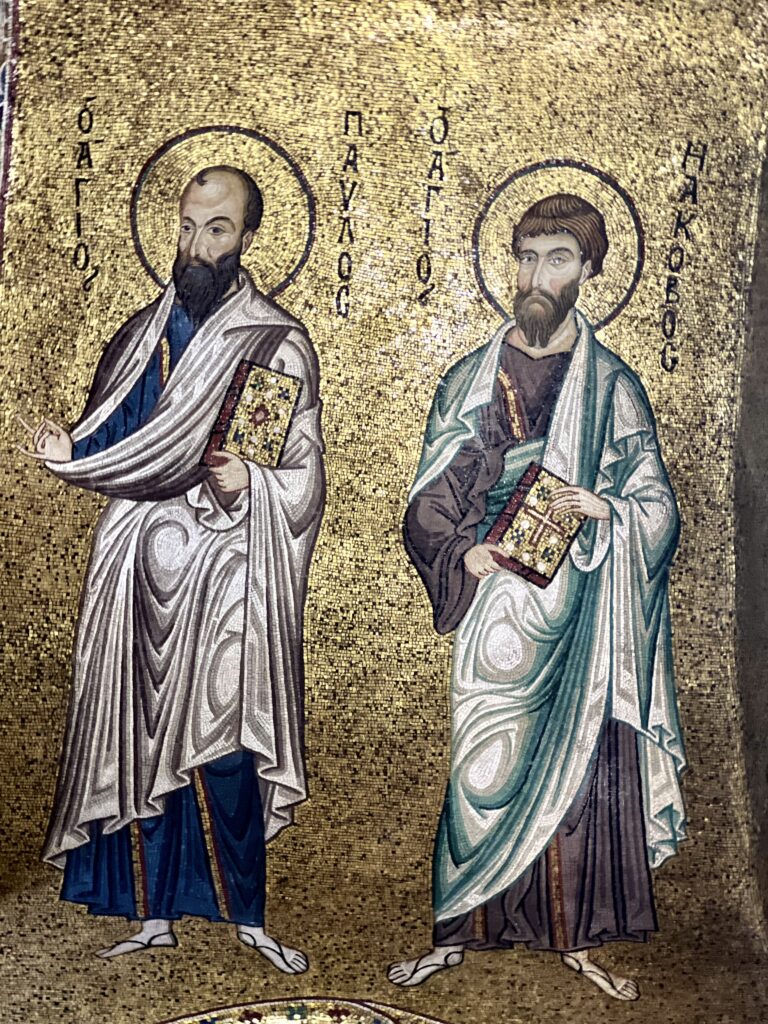
Since its construction, like much else in Palermo, La Martorana has been tinkered with and undergone various transformations. Its single bell tower was added in the 13th century. But it’s a pretty one with three orders of arches and mullioned windows.
In 1588, its entrance was demolished and a narthex (enclosed porch) added to the facade. In the 17th century, the marble Baroque portal (door) was added.
At that same time, some of the original apse mosaics were unfortunately destroyed. They likely held an image of the Virgin Mary.
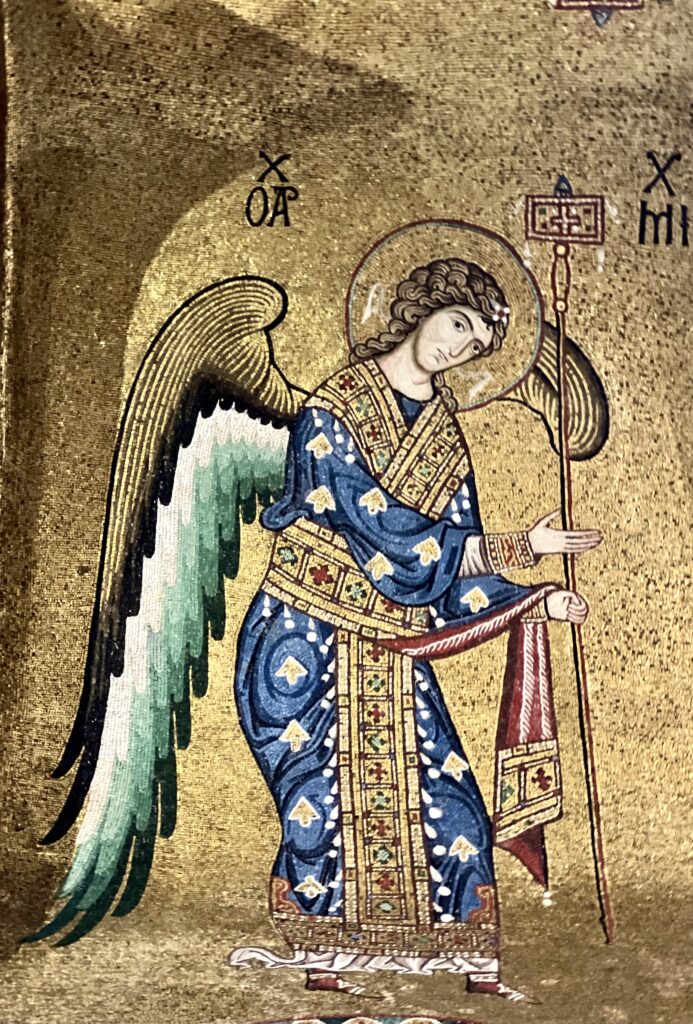
A rather overwrought Baroque altar area replaced it. In the 19th century, the architect Patricolo restored the remaining mosaics, covering half the church, mostly to good effect.
In 1935, Mussolini returned the church to the Albanian Orthodox community. La Martorana still holds masses in ancient Greek, just as when the church was founded 900 years ago. The seats of the pews can be flipped up, consistent with standing during Greek Orthodox religious services.
Since 2015, the church has been part of Palermo’s Arab-Norman UNESCO designation.
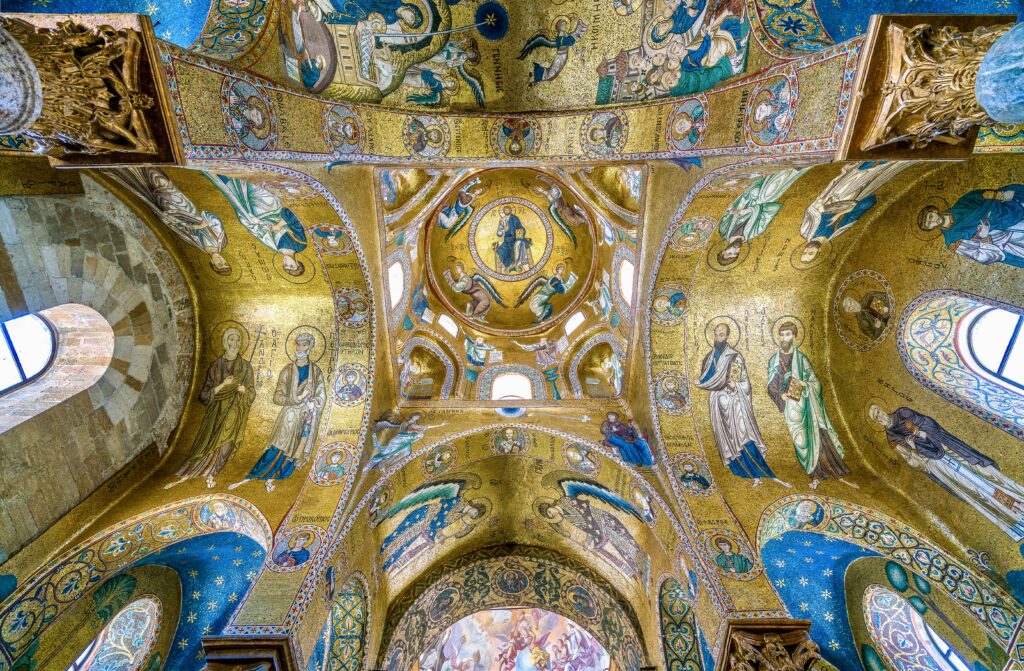
Guide To La Martorana: What To See
The church interior was originally in a Greek cross plan, but it’s been expanded several times. Here’s what you should see inside.
Mosaics
The highlight of any visit to La Martorana are the original gold mosaics, iridescent and shimmering. They’re in the core of the Norman church, with a mix of religious and political themes.
The most famous mosaic, near the entrance, is a scene of King Roger II being crowned by Christ. The mosaic carries an inscription Rogerios Rex in Greek letters. It’s the only known portrait of Roger in Sicily.
Roger wears a loros, an embroidered cloth the Byzantine emperors used to wear, ornamented with pearls. Both Roger and Christ appear to frown, perhaps suggesting the enormity of the occasion.
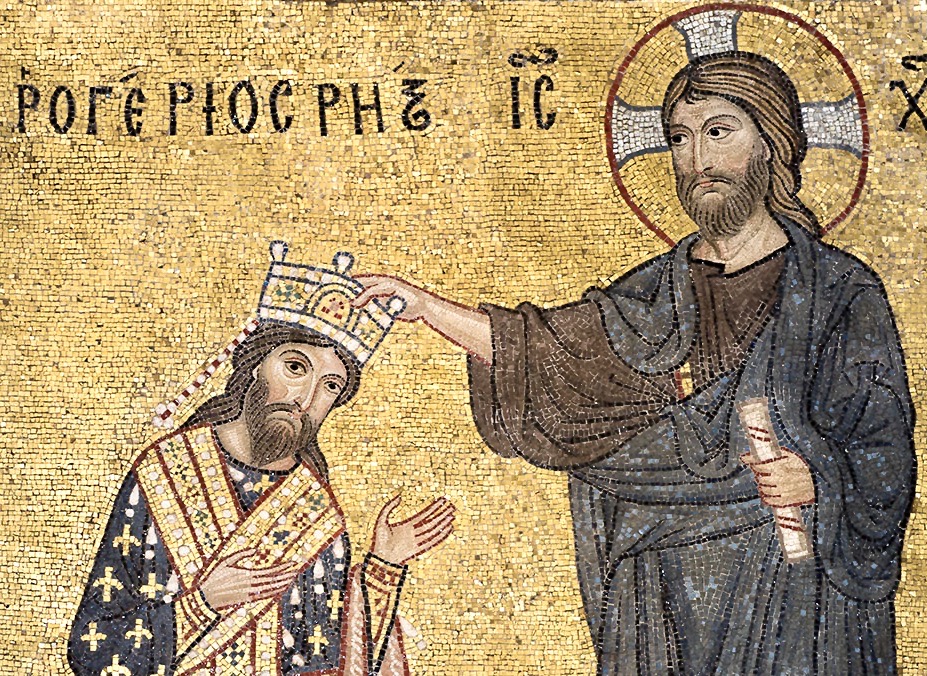
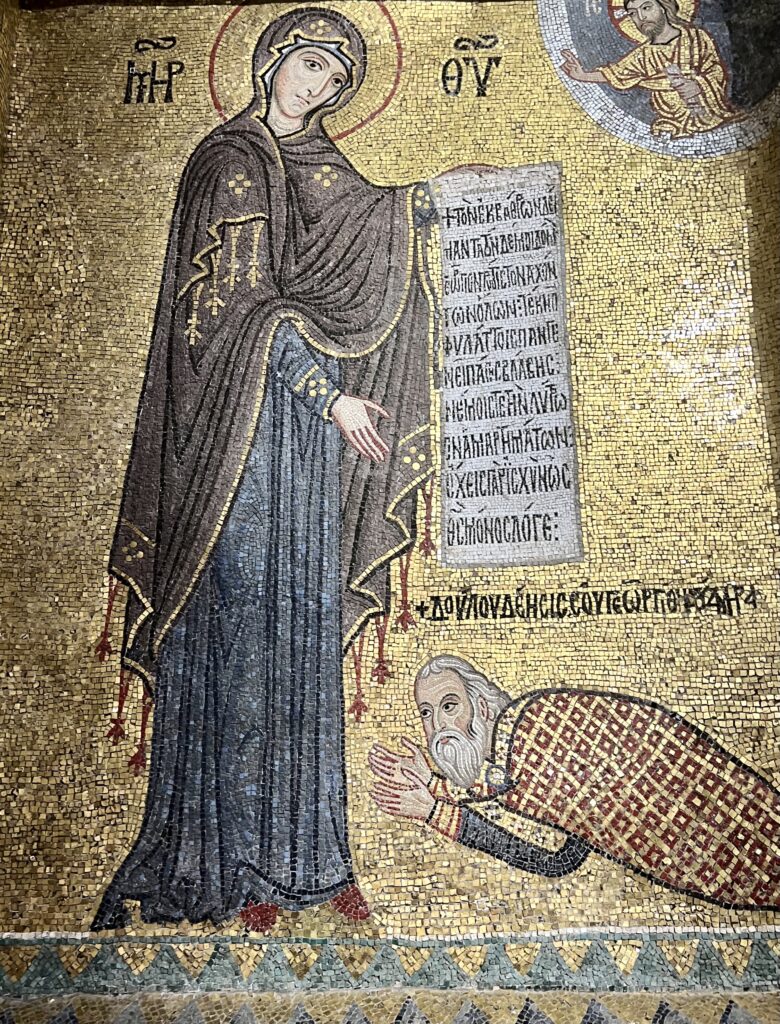
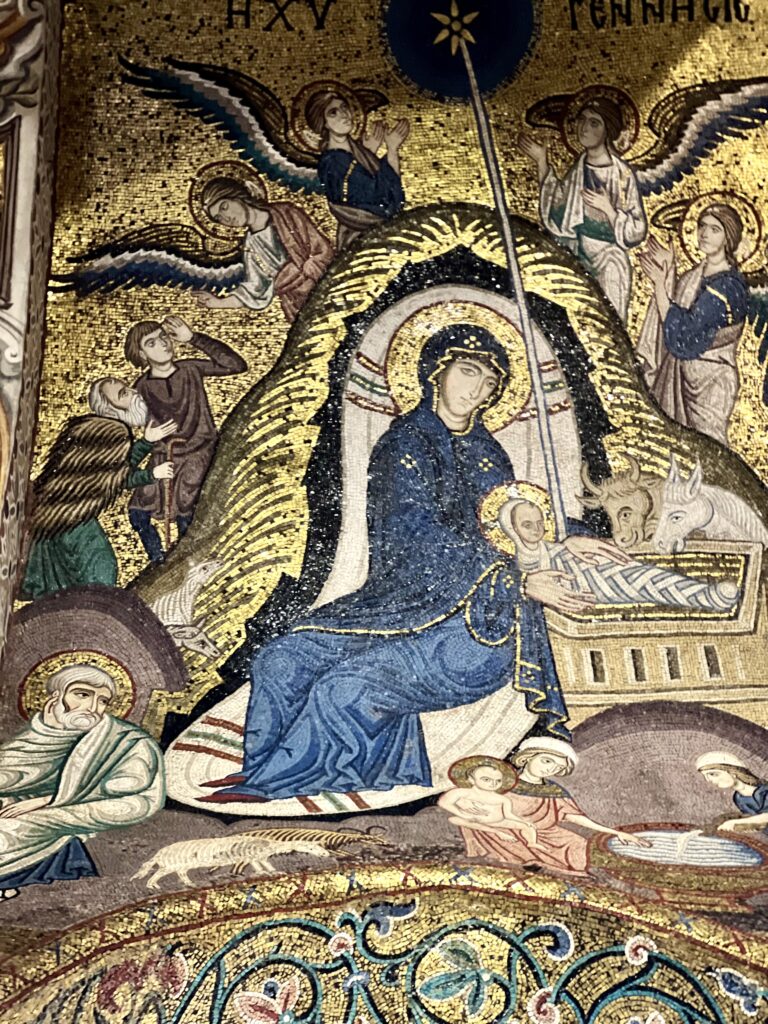
In the first chapel on the left, another famous mosaic shows George of Antioch prostrating himself before the Virgin Mary. George is shown with flowing white hair and a beard kneeling at Mary’s feet. A luxuriant robe curves over his back like a turtle shell.
Mary wears a robe decorated with red tassels. She lifts a hand to indicate George’s devotion. In her other hand, she holds a scroll with a Greek inscription. In the upper right, Christ pops out of a cloud, seeming to give a “thumbs up” to George.
In the dome, supported by Fatimid pillars, there’s the usual Christ Pantocrater, a recurring theme of mosaic decoration. He holds a bible text saying “I am the light of the world.” Christ is surrounded by four genuflecting archangels who, oddly, seem larger than him.
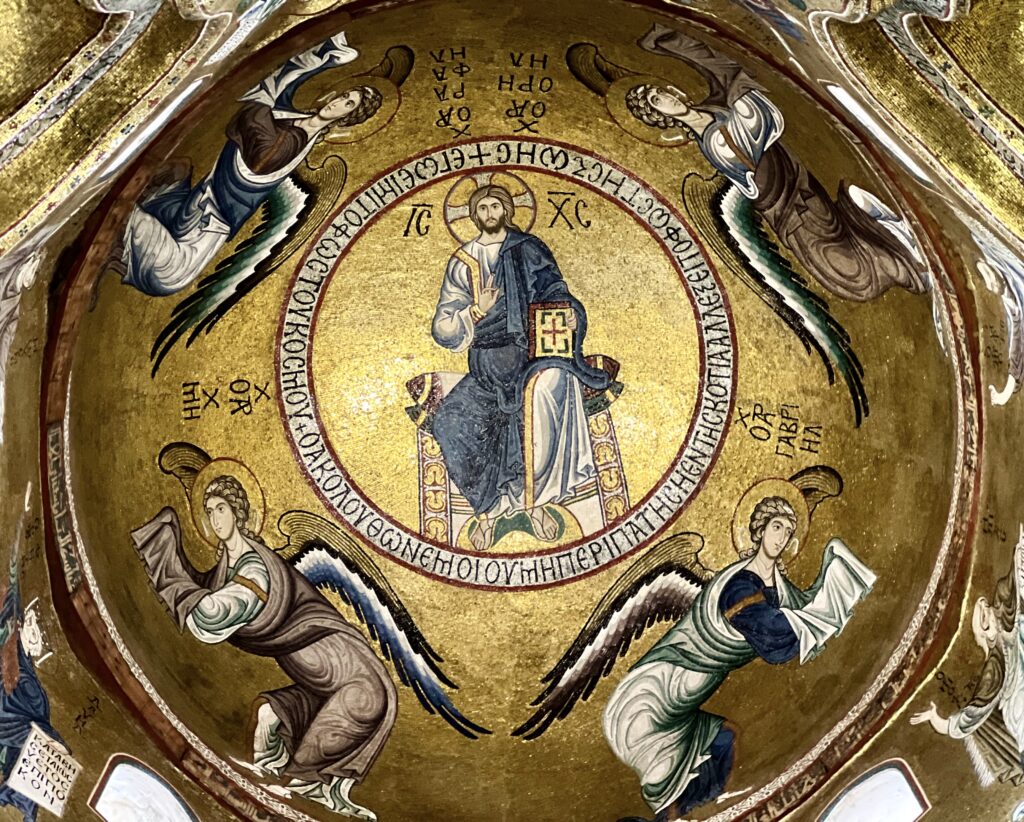
Lower down is a ring of Old Testament prophets who point toward Christ. They hold scrolls with their prophecies. The niches in the corner are inhabited by the four Evangelists writing gospels at wood lecterns.
In the western barrel vault under the arch are scenes from Mary’s life. There’s a Nativity of Christ on one side and on the other the Death of the Virgin.
In the sweet Nativity scene, a monumentally sized Mary sits on a white mattress in front of a cave. Two oxen peak into the cradle, and seems surprised to find a baby instead of hay.
Angels clap. And poor Joseph sits at the bottom left looking exhausted.
Opposite the Nativity is the death of the Virgin. Mary lies on her funeral bier with St. Peter and St. Paul in attendance. Christ raises Mary up indicating he’s taking her to heaven while she’s in a deep peaceful sleep.
Arab Inscriptions
Two marble columns in the church have Arabic inscriptions from the Koran, attesting to its age.
They may have been part of an ancient Roman villa or temple that was pillaged and repurposed when the Muslims conquered Sicily in the 9th century.
There are also inscriptions around the base of the dome in a narrow wooden band. Oddly, they describe the Greek Orthodox liturgy.
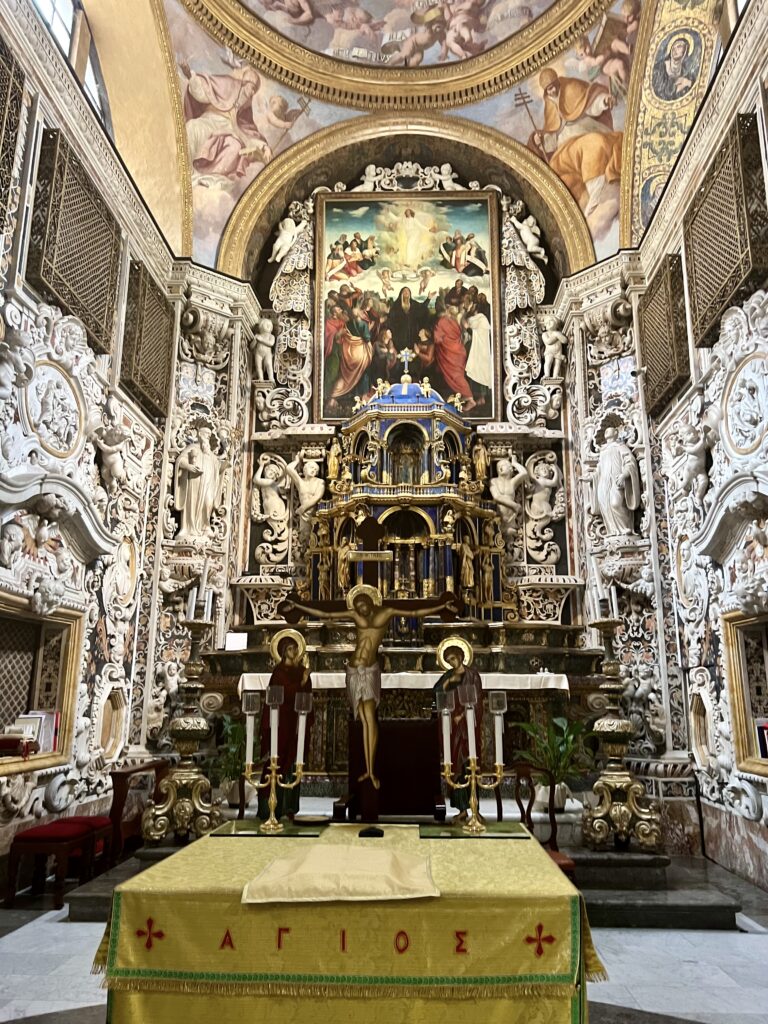
Altar
The altar is an over-the-top frilly Baroque affair. Its decoration is known as marmi mischi (mixed marbles). It seems almost jarring set against the medieval mosaics.
Above it are Baroque frescos in muted tones. They are the work of both Sicilian and foreign painters, but of little artistic significance.
If you want to see the best Baroque church in Palermo, I recommend heading to the Gesu Church. It exemplifies the Baroque period’s “fear of empty spaces.” You’ll find carved columns, dramatic statuary groupings, twisty columns, and ceiling frescos. The sculptures are by the stucco genius Serpotta.
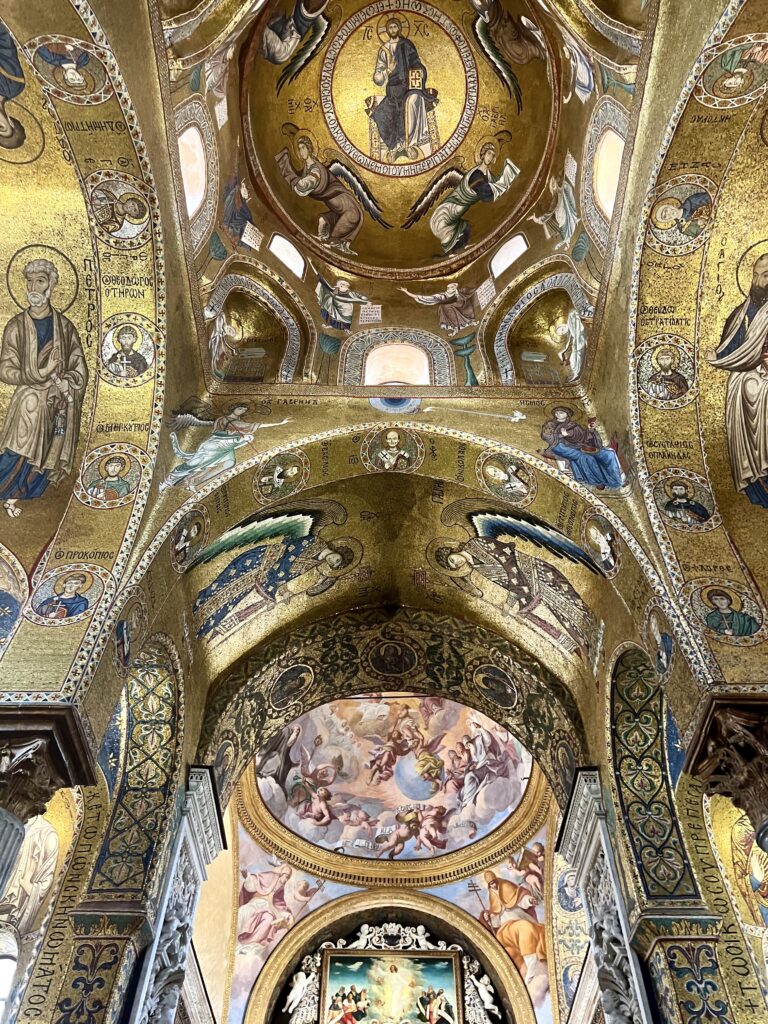
Practical Information For Visiting La Martorana
Address: Piazza Bellini 3, Palermo
Ticket price: 2 euros
Opening Hours: Monday to Saturday 9:30 am to 1:00 pm and 3:30 pm to 5:30 pm. On Sunday, it’s open from 9:00 am to 20:30 am
I hope you’ve enjoyed my guide to La Martorana. You may enjoy these other Sicily guides:
- 2 days in Palermo itinerary
- 2 days in Syracuse itinerary
- 2 days in Trapani itinerary
- 1 day in Catania itinerary
- 1 day in Taormina itinerary
- Guide to the Valley of the Temples
- Guide to Villa Romana del Casale
- Guide to Monreale Cathedral
- Guide to the Norman Palace and Palatine Chapel
- Guide to Palermo Cathedral
- Guide to the Ruins of Segesta
- Guide to Syracuse Archaeological Park
If you want to visit La Martorana, pin it for later.
